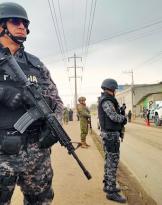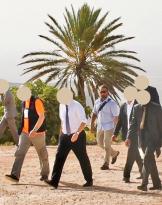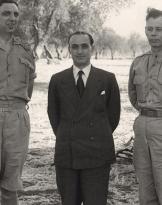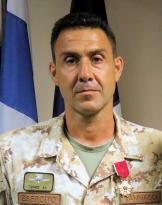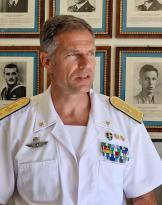During the visit to Varignano, Difesa Online had the opportunity to interview Rear Admiral Massimiliano Rossi, commander of the Underwater and Incursori Grouping of the Navy, former commander of the GOI (Incursori Operational Group).
Rear Admiral, how has the Regroupment changed in recent years?
I took over the command of COMSUBIN in 2019, although I came from the "family" of the raiders, my energies were mainly dedicated to the component I knew less (despite having the diver's license), or the GOS (Gruppo Operativo Underwater). As a commander, I therefore tried to be interested in their problems and meet their needs.
I was lucky enough to inherit the Grouping when a lot of funding arrived, thanks to the work of my predecessors, which will allow, for example, the replacement of Nave Anteo with a new multi-purpose underwater support unit as well as the acquisition of a ship dedicated for underwater reclamation (UBOS).
The operational theaters, in which the raiders were employed, inevitably changed the doctrines in use at the GOI.
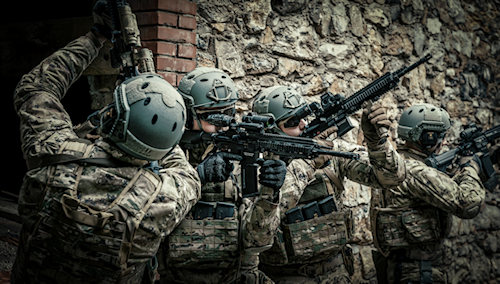 How much have twenty years of operations in Afghanistan affected GOI operators?
How much have twenty years of operations in Afghanistan affected GOI operators?
The middle range of operators who are taking on positions of responsibility within the detachments and operational platoons, have grown up in the theater following the teachings of non-commissioned officers and senior officers, thus being able to acquire an important operational background.
How much has the integration with the other raiding departments grown?
The birth of the COFS, in 2004, allowed greater integration - working together we grow together - allowing the creation of joint FS devices. It would therefore be unfair not to recognize that, having worked together with the detachments of the GIS, the 17 ° Stormo and the Nono, but also with the support departments such as the 4th Ranger, has created a strong link between the departments, allowing a growth of the entire OS sector.
Did the creation of a joint command also make it possible to optimize the acquisition of new equipment?
Surely. The COFS provides standards that are sought to be respected based on what are the procurement activities, the latter being the responsibility of the individual armed force. The materials supplied are mostly common, the differences manifest themselves in the elective environments of each single department. As far as diving equipment is concerned, the GOI obviously represents the reference department for the whole sector. While for other activities it would be paying to refer to the GIS operators for all those activities "of the police sector" that could be exported in the defense sector.
 Within the GOI, are activities related to maritime counter-terrorism always taken care of?
Within the GOI, are activities related to maritime counter-terrorism always taken care of?
Absolutely, it is in fact one of the tasks that differentiate the Tier 1 units from the Tier 2 ones, both in the “Graziano Doctrine” and in the more recent ones, as part of the Joint Forces Missions, expressed by the Chief of Defense Staff.
Hostage Release (HRO) operations are for the raiding departments the necessary higher training level than the other units in the sector that cannot express this ability. Operating in a confined environment, raiding rooms with hostages is not the clean-up activity that could be assigned to a Tier 2 department. If I know there are no hostages inside a building, I can use techniques otherwise I will have to adopt all those precautions that will allow me to reach the goal in the shortest possible time, with a greater margin of risk. This distinguishes a department of strategic level, that is the acceptance of a greater risk.
Would the strategic level become even more pronounced if this operation took place on board a ship?
In this type of operation the objective is to free the hostages, the safety of the operators therefore takes a back seat. It is clear that, when the operational concepts for approval are elaborated, the assessment of the risks for one's own forces and for the life of the hostages is presented to the decision maker. However, zero risk in an HRO business does not exist! The political decision-maker, therefore, is involved in the exercises of the COFS, as the method of decision and acceptance of the risk must be “illustrated” to him. As navy raiders, targets located in the water represent our fundamental target.
The GOI uses passenger ships to carry out training activities related to the freeing of hostages. The task is not limited only to the final break-in, the training themes also concern how to reach the goal, how any contingencies are managed, how to refuel a helicopter that has released the operators with the beard on the deck of the ship. It therefore needs naval platforms, with flight crews. A ship assault operation is a very complex aero-naval cooperation activity. A passenger ship, with 2 / 3.000 people on board to control (as it could have happened in 1985 with the seizure of the Achille Lauro, NdA), would represent an extremely complex activity to manage and perform.
Hypothesize, in the future of the GOI, a return to origins.

In this regard, I want to clarify that the GOI has never abandoned its elective environment which is the sea, despite the fact that in the last twenty years the use has been characterized on a terrestrial level. Moreover, at this moment the maritime activity is particularly important with potential threats to ships, both at anchor and in movement, very current.
We have a multi-year contract that will allow the modernization of underwater transporters (SDV), these investments are the result of a particular "attention" that the whole defense sector is turning to a strategic sector.
What do you think of the controversy of some time ago on the Navy's communiques regarding the recurrences of the naval battles of the Second World War?
I do not comment on the controversy.
The group that I am honored to command has received a total of 33 gold medals: this is the most decorated unit of the Italian Armed Forces. History can be written and read in various ways, it is not objective.
The traditions that have been passed on cannot be questioned: the raiders are an assault unit!
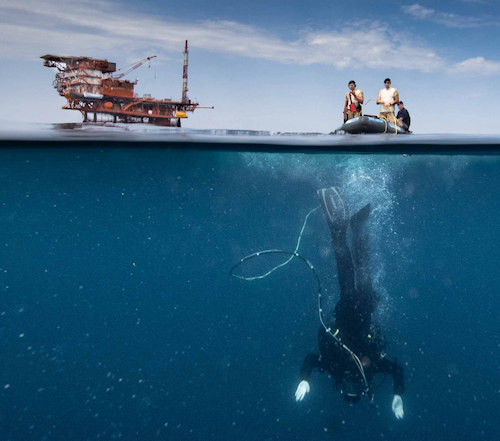 It is incontrovertible that the GOI represents a tool capable of conducting offensive actions in hostile territory. Within the COMSUBIN, the GOS, on the other hand, is more frequently used to support the community, in activities ranging from the deactivation of submerged devices to the recovery of polluting “eco-bales”. The divers are certainly the most expendable component in the civil field.
It is incontrovertible that the GOI represents a tool capable of conducting offensive actions in hostile territory. Within the COMSUBIN, the GOS, on the other hand, is more frequently used to support the community, in activities ranging from the deactivation of submerged devices to the recovery of polluting “eco-bales”. The divers are certainly the most expendable component in the civil field.
GOS is called when disasters occur at sea.
Surely. In this case they carry out the very sad task of recovering the bodies from the sunken boats. The work of the GOS is extremely particular, the underwater environment - for both components - is by nature hostile. Maybe it could come naturally to us to make a night dive, rather than high-altitude jumps or be locked inside a diving suit, but these are all activities that mentally require effort, self-control, serenity and important training.
As regards the recovery of boats sunk in deep waters, is the GOS gearing up?
Obviously yes! We have to deal with the age of Nave Anteo, however in the future we will be able to count on a new unit. It will have technological solutions that will allow us to operate at depths of about 600 meters.
The US has created a new armed force, the Space Force. Do you think that one day you too will have to train in order to operate in the new context?
We are starting collaborative activities with the European Space Agency, as the two realities of the group have potential in the space sector: to work within confined spaces, such as a space station or inside the ADS suit but also the selection of astronauts whose mindset is very close to that of the raiders (the astronaut Paolo Nespoli was a Col Moschin raider). In the future, a GOI raider or a GOS diver could be part of a crew to be sent into space.
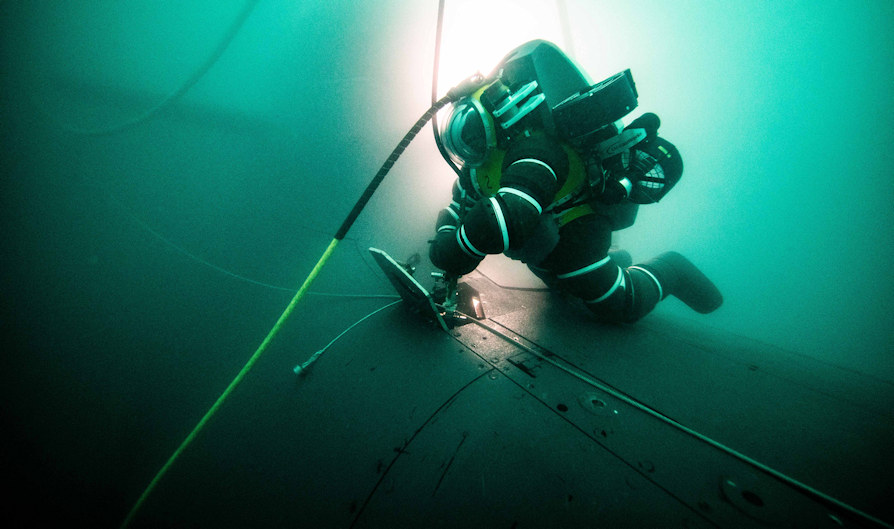
Photo: Online Defense / COMSUBIN




